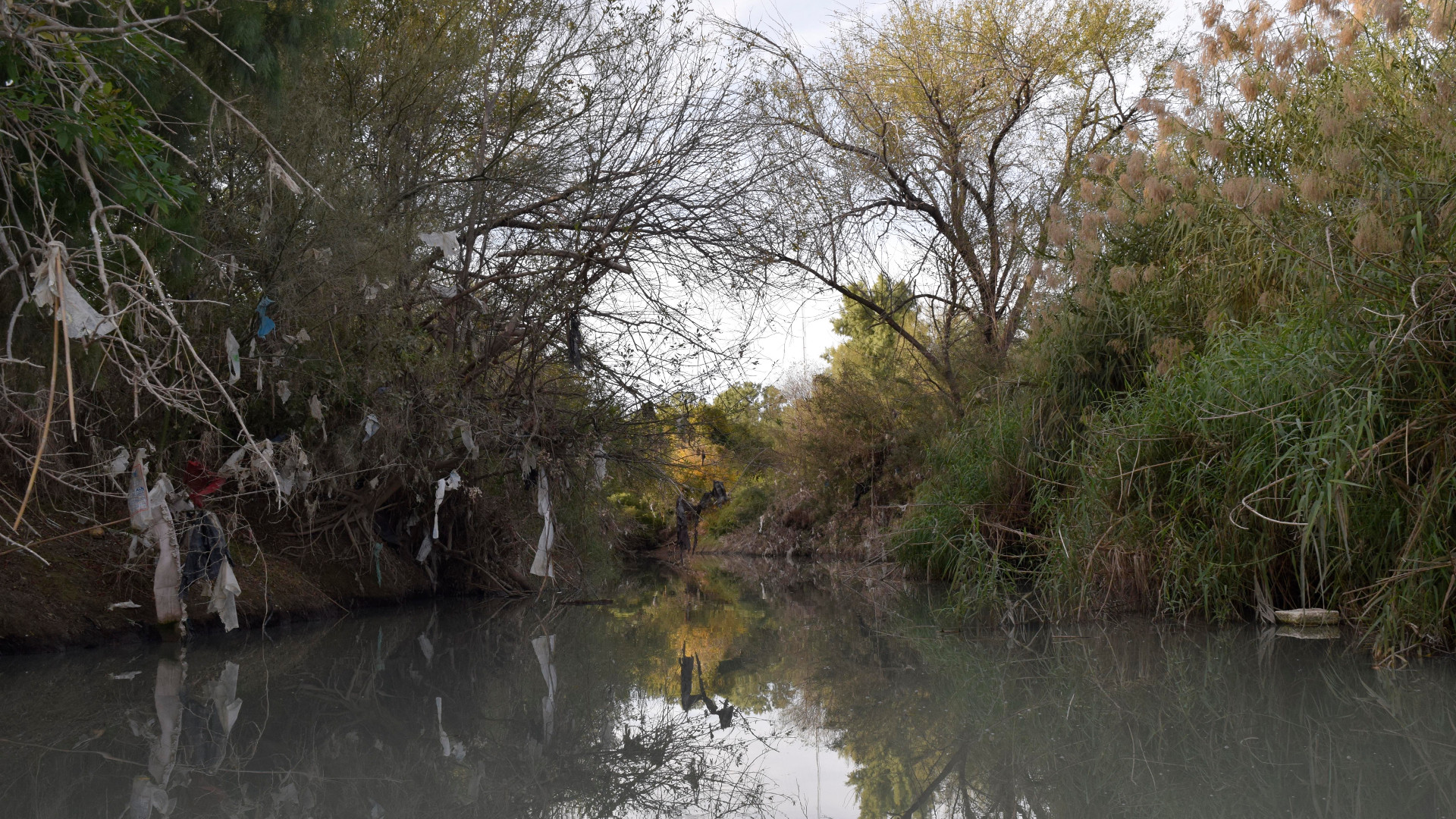Part III of The Revelator’s “A Border Betrayed” investigation.
LAREDO, Texas — Tom Vaughan steers his two-person kayak across the 50-yard-wide Rio Grande River to an inlet on the Mexican side of the river. On either side of the creek plastic bags, diapers and shredded clothing dangle from the shrubs, providing a warning of the hazard ahead.
“As you can tell, this is raw sewage,” Vaughan says as we paddle up the creek against a gentle current of dark brown water overlaid with a pungent earthy aroma.
Vaughan is a member of the advisory board for the Laredo-based Rio Grande International Study Center, a nonprofit that works to preserve and protect the local watershed. A zoologist with a Ph.D. from the University of Arizona, he has been taking weekly water samples for 20 years as part of the Texas Clean Rivers program.
Vaughan turns his blue, rubber-shelled kayak downstream into some rapids. A wave splashes over the bow, sending sewage-laced river water into the boat. We paddle along the Mexican side of the river toward the water-treatment plant for a city called Nuevo Laredo, the sister city of its Texan counterpart.
Nuevo Laredo draws drinking water for its 635,000 residents from the Rio Grande — less than a quarter mile downstream from the sewage outfall.
“I don’t think that’s a good idea,” he says as we glide by the water works.
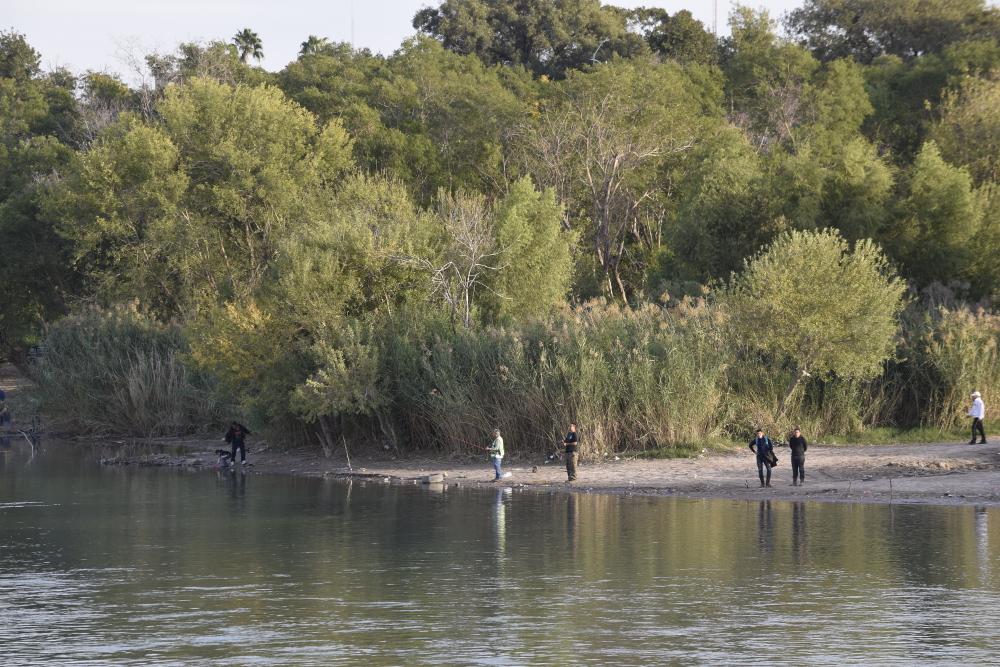
The Mexican city, which has grown rapidly from increased U.S.-Mexico trade spurred by the North American Free Trade Agreement, dumps about 6 million gallons a day of raw sewage into the Rio Grande.
It used to be much worse — as much as 25 million gallons a day — before the city’s first wastewater-treatment plant was constructed in 1996. An obscure bi-national agency called the International Boundary and Water Commission built and operates the $60 million facility.
More than 20 years later, the Nuevo Laredo wastewater treatment system is in poor condition and the city’s sewage lines are failing. Raw sewage once again plagues the Rio Grande.
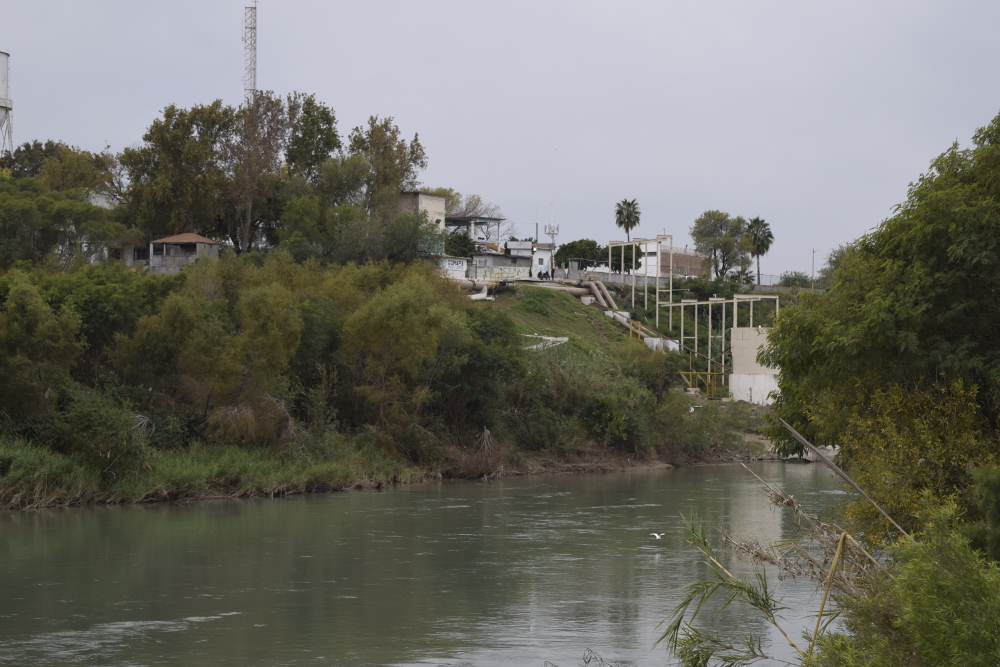
The failure of the joint investments by the U.S. and Mexican sections of the International Boundary and Water Commission to permanently eliminate untreated sewage discharges from Nuevo Laredo is just one of many examples of where the commission has been unsuccessful in constructing vital wastewater treatment systems in border communities.
The commission has struggled for decades to address ongoing border sanitation issues along the U.S.-Mexican border. The commission appears to lurch from crisis to crisis and rarely has enough money to complete a wastewater system before it becomes obsolete. Experts tell The Revelator the commission lacks long-term strategic planning to deal with a surging border population and takes a very narrow view of its role in addressing border environmental infrastructure needs.
The commission declined repeated requests for interviews with its top officials.
Another crisis is brewing in California, where the U.S. section of the commission is now under fire for failing to find a solution to Tijuana’s collapsing sewer system. Baja California’s largest city is growing faster than its aging wastewater infrastructure can handle.
 Tijuana is built in the hills abutting the U.S. border, so when its wastewater system is overwhelmed it sends millions of gallons of raw sewage flowing into the Tijuana River, which crosses the border and drains into the Pacific Ocean. The floods of sewage force U.S. cities to routinely close public beaches from Imperial Beach to Coronado. (See Part I and Part II of The Revelator’s series “A Border Betrayed.”)
Tijuana is built in the hills abutting the U.S. border, so when its wastewater system is overwhelmed it sends millions of gallons of raw sewage flowing into the Tijuana River, which crosses the border and drains into the Pacific Ocean. The floods of sewage force U.S. cities to routinely close public beaches from Imperial Beach to Coronado. (See Part I and Part II of The Revelator’s series “A Border Betrayed.”)
Infuriated by decades of raw sewage flows, two California border cities filed a lawsuit in U.S. District Court on March 2 against the U.S. section of the International Boundary and Water Commission for failing to control and treat untreated wastewater discharges from Tijuana.
“Defendants have utterly failed to fulfill their legal and moral mandates,” alleges the lawsuit filed by the cities of Imperial Beach and Chula Vista and the San Diego Port Authority.
World War II-Era Treaty
The U.S. and Mexican sections of the International Boundary and Water Commission were created in a 1944 treaty between the two countries. The commission is required to be led by an engineer and the U.S. section has about 313 employees. The Trump administration wants to cut the U.S. section’s annual budget from $77 million in 2017 to $71 million by 2019. The U.S. section is part of the State Department.
One of the commission’s duties — mandated in Article 3 of the 1944 “Utilization of Waters of the Colorado and Tijuana Rivers and of the Rio Grande” treaty — is to “give preferential attention to the solution of all border sanitation problems.” When the treaty was ratified, the preamble noted that the countries were entering into it “by the sincere spirit of cordiality and friendly cooperation which happily governs the relations between them.”
But even with initial goodwill the International Boundary and Water Commission hasn’t been able to meet the border’s environmental infrastructure needs, which continue to steadily increase. Rapid growth of Mexican border communities has outstripped cities’ ability to finance, build, operate and maintain expensive wastewater collection and treatment systems. The U.S. has long subsidized investments in Mexican wastewater-treatment systems because of the positive public health benefits to populations on both sides of the border.
The commission owns wastewater-treatment facilities in Nuevo Laredo, Rio Rico, Ariz., and in the San Diego community of San Ysidro. The Nuevo Laredo and San Ysidro facilities process sewage from Mexico. The Rio Rico wastewater treatment plant treats sewage from two towns in Arizona and Mexico, each called Nogales.
The Nuevo Laredo wastewater treatment system needs more than $55 million in upgrades. The Rio Rico facility needs at least $40 million to replace a deteriorating sewer line that occasionally ruptures and pollutes the Santa Cruz River.
That pales in comparison to cost estimates to rehabilitate Tijuana’s entire wastewater treatment system, which could run as high as $400 million over the next 50 years.
But more immediate, short-term fixes to capture and divert the current wave of sewage in the Tijuana River are also necessary.
“It’s in the tens of millions to fix the system that we need to stop sewage flows,” says Serge Dedina, mayor of Imperial Beach, Calif.
Even that amount of money will be tough to find.
With bi-national relations seriously strained by President Trump’s demands that first Mexico, and now Congress finance a $25 billion border wall and his threat to tear up the North American Free Trade Agreement, the outlook for funding to repair and upgrade the three commission-owned wastewater treatment facilities is bleak.
The commission is also facing $75 million to $80 million in repairs for the wastewater treatment system in the Baja California city of Mexicali, where the northerly flowing New River is contaminated by untreated sewage and slaughterhouse discharges before it crosses the border into Calexico, Calif. The commission estimates it will cost another $98 million for additional treatment once the New River crosses into the U.S.
Spending on the border wall instead of stopping the Tijuana sewage incursion is becoming a major political issue in California, where President Trump made his first visit in mid-March to inspect wall prototypes.
“While the federal government is requesting billions of dollars to build a wall at the border, it has failed repeatedly to act on this serious contamination issue that has plagued the Tijuana River Valley, Imperial Beach residents, businesses and tourism in the San Diego region for 30 years,” state Senator Ben Hueso wrote in a statement after Trump’s visit.
On March 15, Hueso introduced a resolution before the California Legislature requesting that the state join Imperial Beach, Chula Vista and the port authority in their lawsuit. The San Diego Regional Water Quality Control board voted the next day to file 60-day notice with the U.S. section of the commission over its intention to also file a lawsuit.
Five members of the San Diego delegation to the House of Representative — three Democrats and two Republicans — have also requested the State Department’s Office of Inspection General investigate the Tijuana River sewage spills and the role of the International Boundary and Water Commission, KPBS Radio reported on March 26.
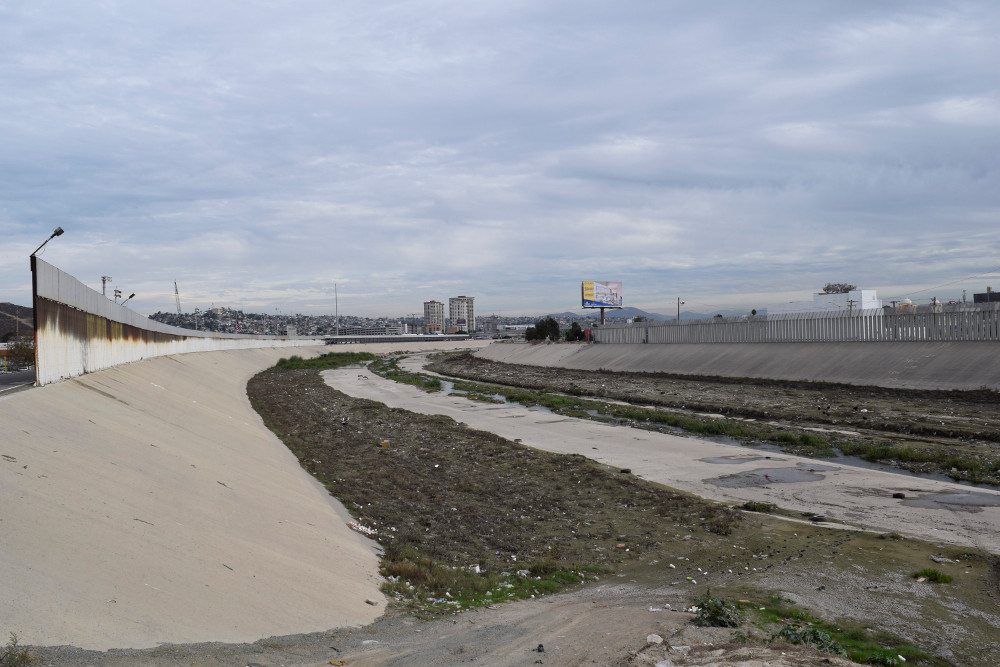
Border environmental infrastructure experts say Trump’s proposed wall will do nothing to address the ongoing public health crisis caused by a lack of safely operating wastewater treatment systems.
“The wall doesn’t provide any practicable urban-municipal function,” says Stephen Mumme, a Colorado State University professor and one of the few U.S. academic experts focused on the International Boundary and Water Commission.
Instead, he says increased investment in the border zone to improve the standard of living on both sides of the border would help create a “social wall” that would discourage illegal immigration, increase economic prosperity and reduce public health concerns.
Delaying investments in wastewater treatment systems, Mumme adds, only prolongs the inevitable.
“This is not the place to go about doing a lot of budgetary surgery to save money because you are really getting a lot of value for what you’re putting in,” he says. “And if you don’t do that, you’re going to have to come back and do it anyway because people are going to get sick and people are going to complain,” as is happening now in the San Diego metropolitan area.
Making matters worse, he says, is the Trump administration’s animosity toward Mexico, which reduces that country’s incentive to invest extremely limited funds into border environmental infrastructure when it has pressing needs in far poorer sections of a country that are recovering from two major earthquakes last year.
“It’s just crazy to be alienating a partner that has struggled to make investments in the border area,” Mumme says.
Backing Away From Its Mandate
The International Boundary and Water Commission, the U.S. Environmental Protection Agency and the North American Development Bank are the three federal agencies that have played a fundamental role in attempting to address wastewater management along the 2,000-mile southern border.
The EPA has provided more than $1 billion in grants to communities on both sides of the border since the late 1990s, but now the EPA’s Border Water Infrastructure Grant Program is nearly depleted. Congress passed a $1.3 trillion omnibus spending bill for fiscal 2018 that includes $10 million for the grant program. The appropriation came after strong bi-partisan support in the House and the Senate.
The North American Development Bank, which was created by a side-agreement of the North American Free Trade Agreement, is also struggling for funds. Unless Mexico and the United States greatly increase the bank’s capital reserves, it will have to sharply reduce lending for border environmental infrastructure projects. There was no money for the bank included in the 2018 omnibus bill, although the Trump administration has requested $10 million for fiscal year 2019.
The funding crisis comes at the same time the Trump administration appears to be backing away from the 1944 treaty requirements.
In an ominous sign for fixing border wastewater issues, the U.S. Justice Department is now attempting to diminish the U.S. section of International Boundary and Water Commission’s role in handling trans-border sanitation issues, despite the explicit requirement in the treaty.
In response to a request from the San Diego Regional Water Quality Control Board for the commission to commit funds for building infrastructure to stop the Tijuana sewage flows, the Justice Department’s Environmental Defense Section stated in a March 1 letter that the commission is not responsible for trans-border sanitation issues.
The letter states the U.S. section commission’s role under the 1944 Water Treaty “does not make it the agency that, under U.S. law, is ‘responsible for managing trans-boundary trash, sewage and sediment discharges’ from Mexico.”
The Justice Department’s claim that the commission is not responsible for stopping the sewage flowing from Mexico into the United States spurred the California cities to file their joint lawsuit the next day, says Mayor Dedina, who has been pressing for state and federal funding to stop the sewage flows that are damaging his city.
A commission spokesperson declined to comment on the Justice Department letter.
The Justice Department’s position appears contrary to earlier commission agreements for handling Tijuana sewage. In 1990 the U.S. and Mexican sections of the commission entered into an agreement to jointly manage and operate the Tijuana wastewater collection and treatment system.
“The agreements stipulate that the commission oversee and manage the project,” says Mumme, the Colorado State University professor. “The Justice Department is simply wrong in saying that they are not in charge.”
No Fix in Sight
The Mexican section of the commission operates a series of pumps and diversion structures that are supposed to capture up to 25 million gallons a day of Tijuana sewage on the south side of the border. The wastewater is sent across the border to the South Bay International Wastewater Treatment Plant, which is owned and administered by the U.S. section of the commission and managed and operated through a private contractor.
The main diversion pump and deteriorating sewer lines in Tijuana frequently fail, sending raw sewage into the Tijuana River. The untreated wastewater flows past the South Bay wastewater treatment plant that is wedged between the south bank of the Tijuana River and the border. The sewage continues through Border Field State Park and the Tijuana Slough National Wildlife Refuge before dumping into the Pacific Ocean.
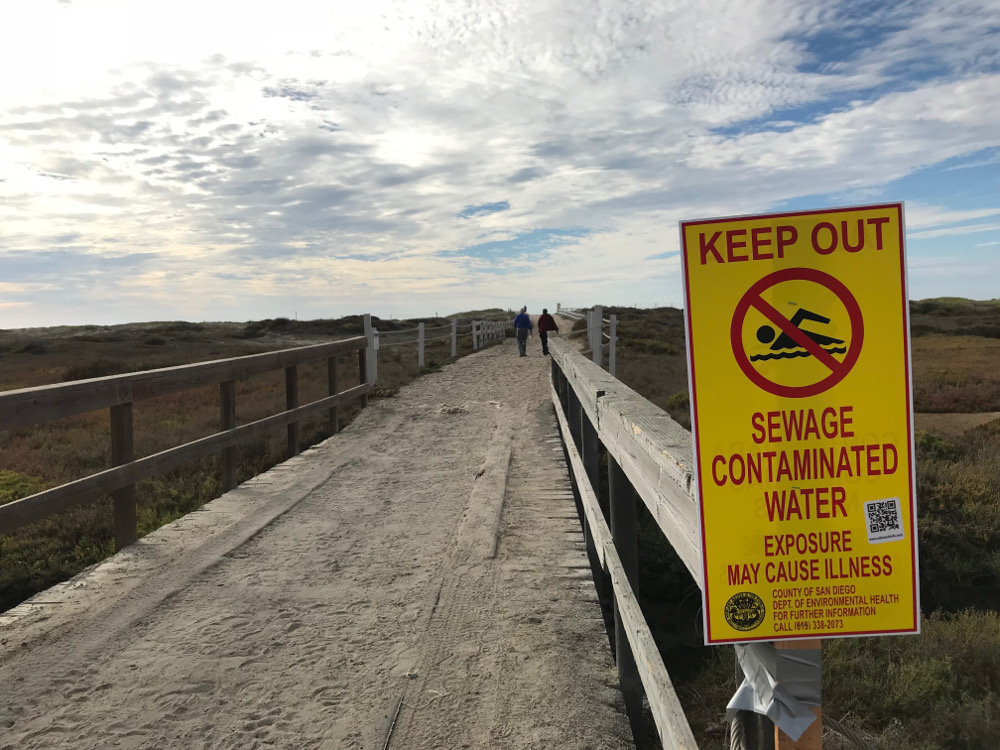
The U.S. and Mexican sections of the commission are working with the EPA and the North American Development Bank to develop a long-term plan to identify infrastructure improvements to mitigate the transboudary sewage flows in the Tijuana River. The development bank expects to award a contract for the study in April.
“We are cognizant of the many adverse impacts posed by sewage, trash and sediment flow which include health hazards, habitat destruction and quality of life aspects,” International Boundary and Water Commissioner Edward Drusina wrote in an August 2017 letter to the city of Imperial Beach.
But the commission’s slow pace and bureaucracy have provided no immediate solutions to the problem forcing state and local governments to attempt to fix a federal problem.
The San Diego Regional Water Quality Control Board has also developed a Tijuana River Recovery Team strategy to address the sewage flows, sediment and massive piles of trash that flow into the river during large storms.
Control board Executive Director Dave Gibson says the agency has proposed installing additional pumps on the U.S. side of the river to capture some of the Tijuana sewage releases that occur when the primary pump operated by the Mexican section of boundary commission fails.
The project would divert the sewage flows to settlement ponds, the South Bay wastewater treatment plant or directly into a pipe that dumps treated wastewater from the South Bay facility into the Pacific Ocean several miles offshore. The project would cost about $10 million to $12 million to build and between $3 million to $5 million a year to operate, he says. But the board has been unable to move forward because of a lack of state and federal funding.
“We’ve been trying to get funds available for years now,” Gibson says. “We haven’t been successful.”
The lack of consistent and timely funding for wastewater-treatment plants along the U.S.-Mexican border has persisted for decades. The U.S. section of the International Boundary and Water Commission states that it can’t do any work on specific projects unless it receives funding authorization from Congress.
The 2018 omnibus bill provides the commission with about $26 million for construction. All of that money is earmarked for improvement of levies along the Rio Grande. The commission is also facing a major construction bill for fixing five of the six dams it owns and operates, which, according to the Army Corps of Engineers, are in unsafe and dangerous condition.
Unless the Trump administration and Congress decide to make major investments on a fundamental government services to safely treat wastewater, the Rio Grande, Santa Cruz, New and Tijuana rivers will continue to be besieged by raw sewage and public health threatened by infectious disease.
As Paul Ganster, chairman of the Good Neighbor Environmental Board, a federal advisory committee on environmental infrastructure needs on the U.S.-Mexican border, puts it: “Without funding from Congress, the border sewage problem cannot be solved.”

